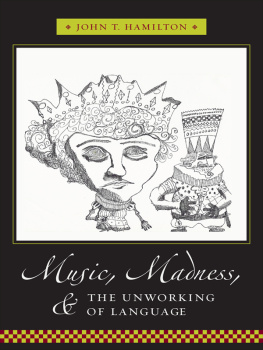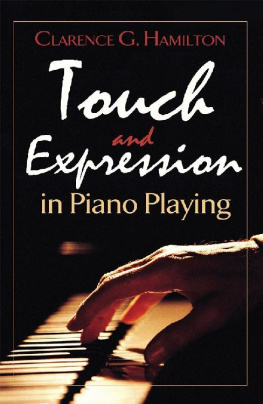Emma Hamilton and Late Eighteenth-Century European Art
This book offers a renewed look at Emma Hamilton, the eighteenth-century celebrity who was depicted by many major artists, including Angelica Kauffman, George Romney, and lisabeth Vige-Le Brun. Adopting an art historical and feminist lens, Ersy Contogouris analyzes works of art in which Hamilton appears, her performances, and writings by her contemporaries to establish her impact on this pivotal moment in European history and art. This pioneering volume shows that Hamilton did not attempt to present a coherent or polished identity, and argues instead that she was a kaleidoscope of different selves through which she both expressed herself and presented to others what they wanted to see. She was resilient, effectively asserted her agency, and was a powerful inspiration for generations of artists and women in their own search for expression and self-actualization.
Ersy Contogouris is Assistant Professor at the Universit de Montral, Canada.
Cover image: Portrait of Emma Hart (c. 17651815), Vige-Le Brun, lisabeth-Louise (Credit: Private Collection/Bridgeman Images).
Routledge Research in Gender and Art
Routledge Research in Gender and Art is a new series in art history and visual studies, focusing on gender, sexuality, and feminism. Proposals for monographs and edited collections on this topic are welcomed.
Representing Duchess Anna Amalias Bildung
A Visual Metamorphosis from Political to Personal in Eighteenth-Century Germany
Christina K. Lindeman
Virgin Sacrifice in Classical Art
Women, Agency, and the Trojan War
Anthony F. Mangieri
Emma Hamilton and Late Eighteenth-Century European Art
Agency, Performance, and Representation
Ersy Contogouris
Female Body Image in Contemporary Art
Dieting, Eating Disorders, Self-Harm, and Fatness
Emily L. Newman
For a full list of titles in this series, please visit
www.routledge.com/Routledge-Research-in-Gender-and-Art/book-series/RRGA
Emma Hamilton and Late Eighteenth-Century European Art
Agency, Performance, and Representation
Ersy Contogouris

First published 2018
by Routledge
711 Third Avenue, New York, NY 10017
and by Routledge
2 Park Square, Milton Park, Abingdon, Oxon OX14 4RN
Routledge is an imprint of the Taylor & Francis Group, an informa business
2018 Taylor & Francis
The right of Ersy Contogouris to be identified as author of this work has been asserted by her in accordance with sections 77 and 78 of the Copyright, Designs and Patents Act 1988.
All rights reserved. No part of this book may be reprinted or reproduced or utilised in any form or by any electronic, mechanical, or other means, now known or hereafter invented, including photocopying and recording, or in any information storage or retrieval system, without permission in writing from the publishers.
Trademark notice: Product or corporate names may be trademarks or registered trademarks, and are used only for identification and explanation without intent to infringe.
Library of Congress Cataloging in Publication Data
A catalog record for this book has been requested
ISBN: 978-0-815-37423-7
ISBN: 978-1-351-18791-6
Typeset in Sabon
by Out of House Publishing
To Sam and Ben
Contents
I am deeply grateful for the generosity and support of a great many people.
For their thoughtful and critical engagement with my work, for their support at different stages of my research and writing on Emma Hamilton, for their collegial generosity, and for their wisdom, acuity, guidance, and encouragement, I would like to thank Nicholas Chare, Nicole Dubreuil, Douglas Fordham, Annie Grin, Dominic Hardy, Johanne Lamoureux, Todd Porterfield, and Lora Senechal Carney.
For their invaluable advice, patience, and support, my sincere thanks to my colleagues at Universit de Montral, in particular Christine Bernier, Emmanuel Chteau-Dutier, Suzanne Paquet, Denis Ribouillault, Kristine Tanton, Louise Vigneault, and my inspiring chair, Silvestra Mariniello.
For countless discussions, sometimes short, sometimes long, but always engaging, and for their ever thoughtful and insightful comments on my work, deep thanks to my colleagues and friends Ginette Jubinville, Marie-ve Marchand, and rika Wicky.
I am thankful to the many people who in one way or another helped me push my thinking, in particular Ada Ackerman, Peggy Davis, Jose Desforges, Kathryn Desplanque, Louise Gros, Sgolne Le Men, Raphaelle Occhietti, Eduardo Ralickas, Alna Robin, and Carol Solomon.
I have benefited from the generous assistance of members of staff at a number of institutions, in particular at the British Museum, Lewis Walpole Library, McGill University Rare Books and Special Collections Division, National Maritime Museum, National Portrait Gallery, Blanton Museum of Art, Tate Gallery, and Wallace Collection.
I would like to thank my editor Isabella Vitti at Routledge for her belief in this project since I first presented it to her and for the skill with which she has guided it. My heartfelt thanks to Nicola Howcroft for shepherding it through, to the team at Out of House Publishing, and to Kim Richardson for his careful copyedits. I am thankful also to the two anonymous reviewers, whose insightful and generous advice helped me improve the argument of the book.
I am more grateful than I could ever express to my friends and family who have lived in close proximity with this project: Myrto Ashe, Ina Angelidou, Imogen Brian, Lara de Beaupr, the Karnis clan, Chryssi Paraskevopoulos, and Alicia Sliwinski; to my mother, Iris Contogouris, whose help and unwavering support has carried me; and to my children, my endless source of wonder, happiness, and strength.
Emma Hamilton was no silly little thing, as an early biographer described her. In fact, she was quite the opposite. She had a marked impact at a pivotal era of European history and art. The wife of Englands special envoy to Naples, the favourite of the queen of Naples, and the lover of Admiral Horatio Nelson, she was an agent on the political stage during the revolutionary and Napoleonic era. She adapted, adjusted, and reinvented herself in her dizzying rise from rags to riches. She participated in the dissemination of neoclassicism in Europe at the very moment of its efflorescence. She entertained and beguiled countless writers, artists, scientists, aristocrats, politicians, and royaltykey figures of the late eighteenth and early nineteenth century who included the German poet Goethe and Englands Prince of Wales. Her Attitudes, a performance she created that tapped into her epochs taste for classicism, was admired and imitated throughout Europe, and inspired generations of women in the performing arts. She learnt to dance the tarantella and introduced it into aristocratic drawing rooms. She influenced an early nineteenth-century network of women throughout Europe, from Paris to St Petersburg, which included lisabeth Vige-Le Brun, Germaine de Stal, and Juliette Rcamier. An unmatched model and sitter, she inspired artists to produce what they acknowledged to be some of their best creations, and she appeared in works produced by the major artists of her time, among whom were Angelica Kauffman, Benjamin West, lisabeth Vige-Le Brun, George Romney, James Gillray, Joseph Nollekens, Joshua Reynolds, Thomas Lawrence, and Thomas Rowlandson. And she repeatedly pushed against the limits of social mores. Emma skilfully negotiated all these different identitiesso skilfully in fact that the diplomat Gilbert Elliot, later first Earl of Minto, called her the most extraordinary compound I ever beheld (II, 364)and in doing so, she provided a unique model of agency, creativity, and self-actualization.










